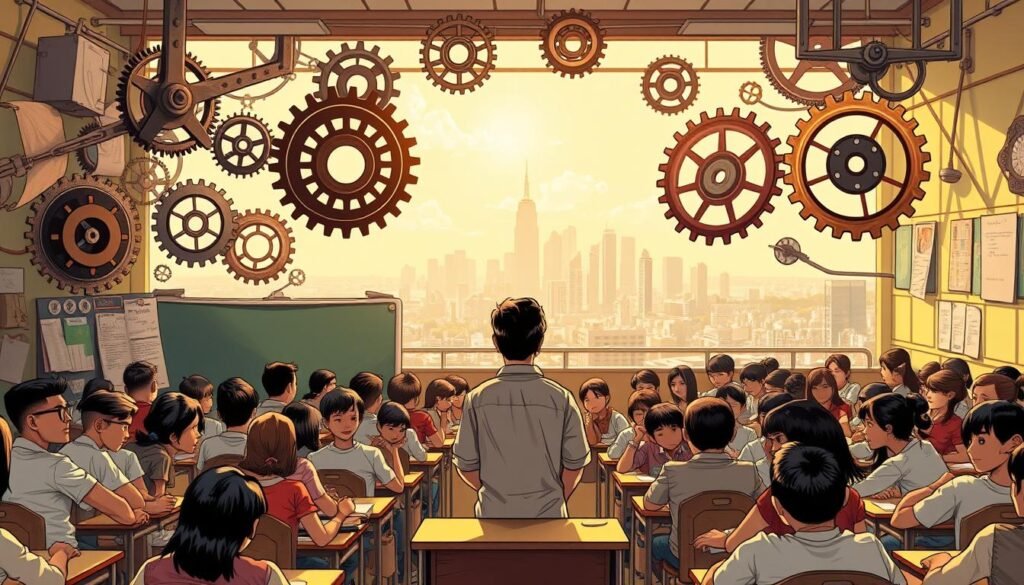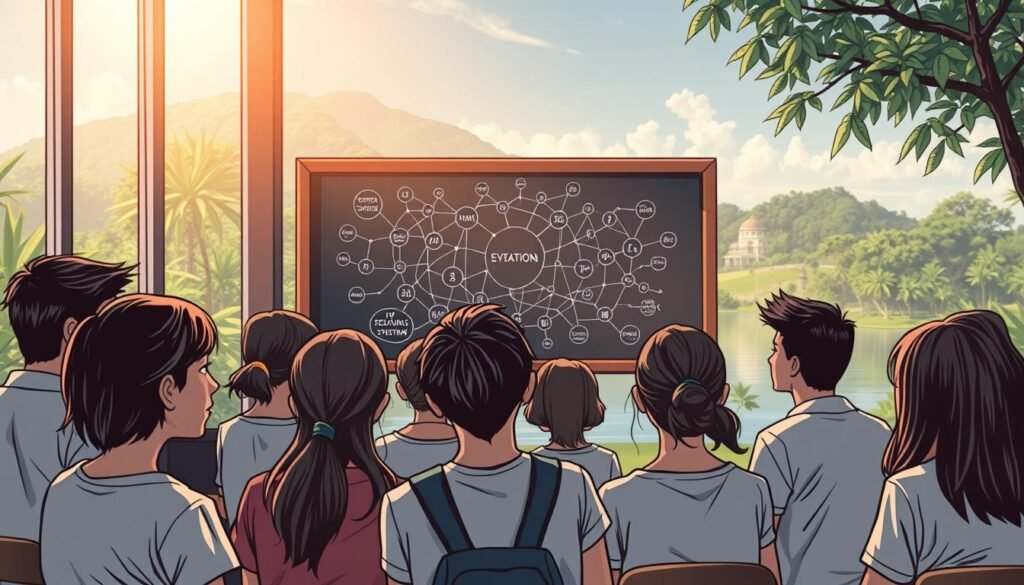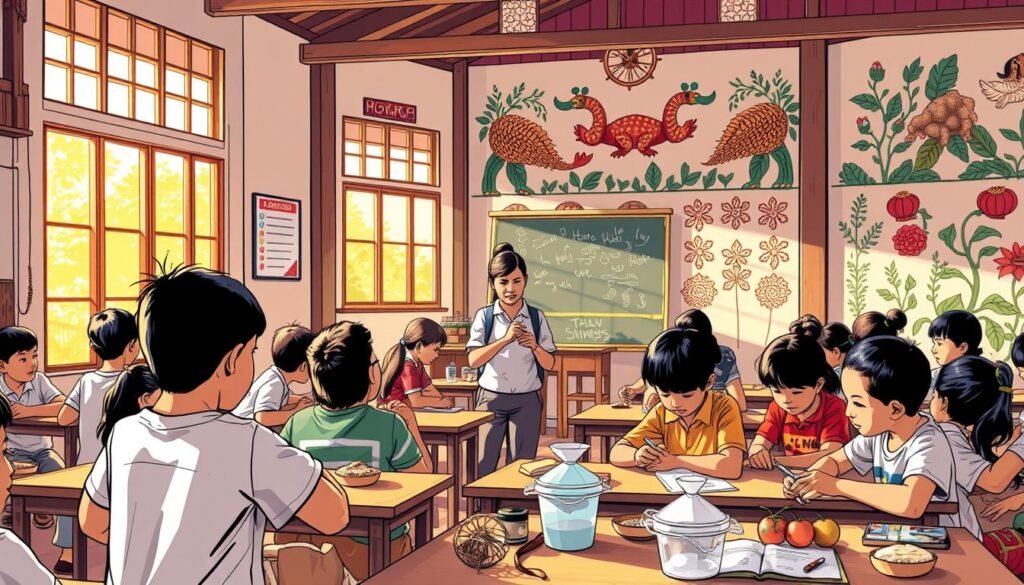The American educational system has played a significant role in shaping the minds of Filipinos. From its introduction during the colonial period, it has influenced cultural values and educational practices. The term “system,” derived from Latin and Greek, reflects the interconnected components that define this approach.
Historically, the establishment of public schools and free primary education under American rule marked a turning point. This framework emphasized critical thinking and practical skills, which continue to impact Filipino education today. For example, the integration of technology, such as the computer, has become a cornerstone of modern learning.
Understanding this system helps us appreciate its informational value and its role in shaping philosophical and educational norms. It also highlights the need for continuous reform to address accessibility and quality in education.
Key Takeaways
- The American educational system has deeply influenced Filipino education.
- Cultural values and educational practices are closely intertwined.
- The term “system” originates from Latin and Greek roots.
- Technology, like the computer, plays a vital role in modern education.
- Historical reforms continue to shape educational norms today.
Overview of the American Educational Influence in the Philippines
The introduction of American educational practices in the Philippines has left a lasting imprint on its culture and societal norms. This influence began during the colonial period and continues to shape the country’s educational framework today. From curriculum design to teaching methods, the American model has become deeply embedded in Filipino education.

Impact on Culture and Societal Norms
American education brought significant changes to Filipino culture. For example, the exclusive use of English as the medium of instruction created a linguistic shift. This change not only improved access to global information but also influenced societal values and communication styles.
Cultural integration was another key aspect. American traditions, such as baseball and folklore, were introduced in schools. These activities promoted teamwork and cultural exchange, leaving a lasting impact on Filipino students.
The Role in Educational Reform
American influence also sparked major educational reforms. The establishment of public schools and free primary education marked a turning point. These reforms emphasized critical thinking and practical skills, which remain central to Filipino education today.
Technological advancements, such as the integration of computer systems, further modernized the curriculum. Digital programs and online resources have become essential tools for learning, reflecting the ongoing application of American principles.
| Year | Milestone | Impact |
|---|---|---|
| 1901 | Arrival of the Thomasites | Introduction of English as the medium of instruction |
| 1925 | Monroe Commission Report | Highlighted the need for educational reforms |
| 1946 | End of American Colonial Rule | Legacy of American educational practices continued |
These milestones illustrate the profound and enduring influence of American education in the Philippines. By understanding this history, we can better appreciate the role of educational reform in shaping modern Filipino society.
Historical Evolution and Etymology of System
The term ‘system’ has a rich history, tracing back to ancient languages and evolving through centuries of scientific thought. Its roots lie in the Latin word ‘systēma’ and the Greek ‘σύστημα’, both meaning “a whole concept made of several parts.” This foundational idea has shaped its modern usage across various fields.

From Latin Origins to Modern Usage
In the 19th century, figures like Nicolas Léonard Sadi Carnot and Rudolf Clausius expanded the concept. Carnot studied the relationship between heat and work in steam engines, while Clausius introduced the idea of a “working body.” These contributions laid the groundwork for thermodynamics and systems theory.
Ludwig von Bertalanffy further revolutionized the term in the mid-20th century. His general systems theory applied the concept to diverse fields, from biology to sociology. This broadened the definition of a system, emphasizing its adaptability and interconnectedness.
Technological advancements, such as the development of computer systems, also played a pivotal role. For example, the integration of digital tools in education has transformed how we understand and apply systems in learning environments.
Today, the term ‘system’ continues to evolve, reflecting its historical roots while adapting to modern challenges. Its journey from ancient philosophy to contemporary science highlights its enduring relevance and versatility.
System in the Context of Education
In education, the concept of a system is essential for organizing and improving learning experiences. A system refers to a structured framework that connects various components to achieve specific goals. In classrooms, this means creating an environment where teaching, learning, and resource management work seamlessly together.

Defining the Term in an Educational Setting
The word “system” in education often refers to a set of interconnected processes. These processes include curriculum design, teaching methods, and technology integration. For example, computer systems are now a cornerstone of modern education, enabling access to digital resources and online learning platforms.
A clear definition of a system helps educators understand its role in improving educational delivery. It also ensures that resources are used efficiently. As one expert noted,
“A well-defined system is the backbone of effective education.”
Key figures like John Dewey and Maria Montessori have contributed to modern educational systems. Their work emphasizes the importance of structured yet flexible approaches to teaching and learning.
| Component | Role |
|---|---|
| Curriculum Design | Outlines learning objectives and content |
| Teaching Methods | Guides how information is delivered |
| Technology Integration | Enhances access to digital resources |
Understanding these components helps educators create systems that are both efficient and adaptable. By focusing on clear guidelines and resource management, schools can ensure that every student benefits from a well-organized learning environment.
Key Concepts of Systems Theory and Applications
Systems theory offers a framework to understand complex interactions in education and beyond. It examines how components work together to achieve specific goals. This approach is particularly useful in designing effective educational programs.

Understanding Open, Closed, and Isolated Systems
Systems can be classified into three main types: open, closed, and isolated. Open systems interact with their environment, exchanging information and resources. For example, a school is an open system as it engages with students, parents, and the community.
Closed systems, on the other hand, operate independently without external interaction. A computer program running offline is a good example. Isolated systems are rare and do not exchange energy or matter with their surroundings.
Components, Inputs, and Outputs Explained
Every system consists of components, inputs, and outputs. Components are the building blocks, while inputs are the resources or data fed into the system. Outputs are the results or products generated.
In education, inputs include curriculum materials and teacher training. Outputs are student performance and learning outcomes. Understanding these elements helps in optimizing educational programs.
Modeling and Architectural Perspectives
Modeling systems involves creating representations to analyze their behavior. Architectural perspectives focus on the structure and design of systems. For example, a computer network can be modeled to improve its efficiency.
In education, modeling helps in designing frameworks that align with workforce needs. It also aids in assessing learning outcomes for continuous improvement.
| System Type | Characteristics | Example |
|---|---|---|
| Open | Interacts with the environment | School |
| Closed | Operates independently | Offline computer program |
| Isolated | No exchange with surroundings | Theoretical concept |
Systems theory provides a clear definition of how components interact. This understanding is crucial for developing robust educational frameworks. For more insights, explore systems theory and its applications.
By integrating systems thinking, educators can better allocate resources and design effective programs. This approach ensures that every student benefits from a well-structured learning environment.
Practical Examples and Resource Applications in Filipino Education
Filipino education has embraced innovative programs to enhance learning outcomes. These initiatives reflect the integration of modern technology and structured frameworks. By examining real-world case studies, we can see how these approaches have transformed classrooms across the country.

Case Studies in Educational Programming
One notable example is the Alternative Learning System (ALS). This program provides flexible education for students unable to attend formal schools. It uses modular learning and community-based sessions to ensure accessibility. For more details, visit the official ALS page.
Another success story is the integration of computer-based learning systems. Schools have adopted digital tools to improve access to information. This approach has been particularly effective in rural areas, where resources are limited. Learn more about the role of technology in education here.
These programs highlight the importance of efficient resource management. By leveraging technology and community involvement, schools can maximize their impact. This ensures that every student has the opportunity to succeed.
Measurable Impact of Educational Reforms
The K to 12 program is a prime example of systemic reform. It extended basic education to 13 years, aligning with international standards. This change has improved student readiness for higher education and the workforce.
Teachers and students work together to implement these programs. Their collaboration ensures that educational goals are met. This teamwork is essential for the success of any initiative.
| Program | Key Feature | Impact |
|---|---|---|
| ALS | Flexible, modular learning | Increased accessibility for out-of-school youth |
| K to 12 | Extended basic education | Improved student readiness for higher education |
| Computer-Based Learning | Digital tools and resources | Enhanced access to information in rural areas |
These case studies demonstrate the practical applications of educational theories. They also highlight the need for continuous improvement. For more insights on educational challenges, visit this page.
Conclusion
The interplay between historical influences and modern technology has reshaped Filipino education. The American educational framework introduced during the colonial period laid the foundation for critical thinking and practical skills. Today, this legacy continues through the integration of computer systems and digital tools, enhancing access to information and learning resources.
Systems theory provides a clear definition of how components interact in education. This understanding is crucial for designing effective programs. For example, the Alternative Learning System (ALS) and K to 12 reforms demonstrate the successful application of these principles.
Maintaining a strong relationship between technology and resource management is essential. By leveraging these tools, Filipino education can continue to evolve and meet the needs of its students. For further insights, explore this resource on efficiency in educational systems.
As we look to the future, the lessons from history and the integration of modern technology will work together to shape a more inclusive and effective educational landscape.
FAQ
How has the American educational system influenced Filipino culture?
The American educational system introduced English as a primary language, reshaped societal norms, and promoted democratic values in the Philippines. This influence is evident in the country’s teaching methods and curriculum structure.
What role did the American educational system play in Philippine educational reform?
It laid the foundation for modern education by establishing public schools, standardizing curricula, and training teachers. These reforms aimed to create a more accessible and structured learning environment.
What is the origin of the term "system" in education?
The term “system” derives from Latin, meaning “organized whole.” In education, it refers to the structured framework of teaching, learning, and administration that ensures effective knowledge transfer.
How is a system defined in an educational setting?
In education, a system is a coordinated network of components like teachers, students, curricula, and resources working together to achieve learning objectives and improve outcomes.
What are the key concepts of systems theory in education?
Systems theory in education focuses on understanding open, closed, and isolated systems. It examines how inputs, processes, and outputs interact to create effective learning environments.
Can you provide examples of system applications in Filipino education?
Examples include the use of technology in classrooms, modular learning programs, and case studies that highlight successful educational initiatives tailored to local needs.
How does modeling and architecture apply to educational systems?
Modeling helps design efficient educational frameworks by analyzing components and their relationships. Architectural perspectives ensure that systems are scalable, adaptable, and meet diverse learning needs.
Source Links
- Education in the Philippines during the American Period (1898-1942
- A History of the System of Education in the Philippines – Its Implication for the Present Generation
- Education in the Philippines during American rule
- Teaching American Values · The Philippines and the University of Michigan, 1870-1935 · Philippines
- Frank L. Crone’s Photographs of Colonial Philippines · The Lilly Library Online Exhibitions
- System
- Life | Definition, Origin, Evolution, Diversity, & Facts | Britannica
- What is a Computer System? | Definition from TechTarget
- Education System (Sociology): Role & Function
- Systems theory
- What Is Systems Thinking? Concepts and Applications | University of Phoenix
- Systems Theory
- Overview of Philippine Education – iEducationphl
- Explore: The education system in the Philippines – FutureLearn
- Conclusion and Recommendations
- 10 Conclusions and Recommendations | Human-System Integration in the System Development Process: A New Look

